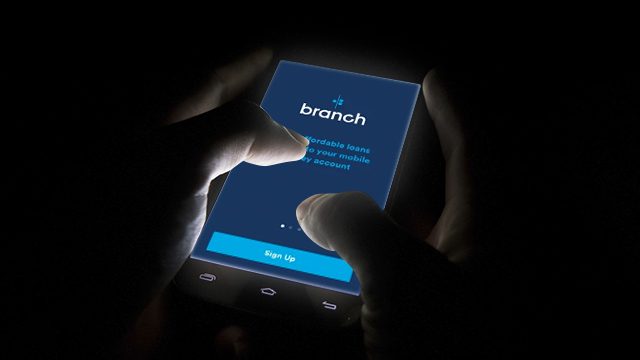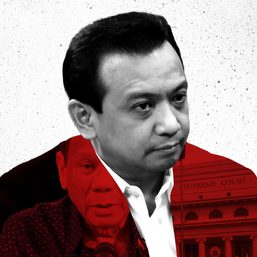SUMMARY
This is AI generated summarization, which may have errors. For context, always refer to the full article.

In 2014, aged 19, Wilson* found himself in need of cash. He saw an easy solution in his smartphone — credit at the touch of a button. Wilson took out loans from two Silicon Valley-based mobile lending companies: Branch International and Tala Mobile (then known as Mkopo Rahisi). The loans (2000 Ksh and 1000 Ksh) amounted to roughly $30. The process was easy: he downloaded an app, filled in some basic personal information and agreed to the terms and conditions. The money arrived in his M-Pesa mobile wallet almost instantaneously.
Since its introduction to Kenya in 2012, digital lending has surged, attracting millions of customers. Today, around 50 mobile lending apps are available in Kenya. Yet as digital credit grows more popular, so do the soaring ranks of debtors and defaulters.
Just a few weeks after applying for credit, Wilson was receiving calls and texts from Branch and Tala representatives about late payments. Unable to repay his loans, Wilson ignored the increasingly menacing messages. “I didn’t know what a CRB [Credit Reference Bureau] was back then,” he explained. Tala and Branch soon reported him to the CRB, a relatively new institution that had come to Kenya in 2010.
When I spoke to Wilson, now 24, he did not know how much he owed, or how to get a credit report. Wilson’s poor credit rating, which he had previously shrugged off, had “become bothersome.” Now the owner of two retail kiosks, he wanted to access more credit to grow his businesses.
Proponents of digital and mobile nano-loans view them as a means towards greater financial inclusion for the world’s poor. Melinda Gates has praised Tala’s founder and CEO for transforming lives. A recent report by Mastercard Foundation and the International Financial Corporation extolled digital financial services in Africa as “revolutionary.”
But ironically, many Kenyans are finding themselves excluded from financial services after failing to pay loans equivalent to only a few dollars. Around 2.7 million Kenyans have been blacklisted by CRBs in the last three years – 400,000 for defaulting on loans of less than $2. And as is often the case in rapidly expanding and poorly regulated markets, tech has outpaced consumer protection and civic education.
Corporate surveillance state
One of the least-acknowledged and perhaps most insidious aspects of digital credit is the way it is expanding the reach of governments and corporations into people’s everyday lives. Financial technology, or fintech, is commodifying the routine habits of Kenyans, transforming their behavior into reputational data to be monitored and assessed.
This has been largely enabled through Safaricom, a partly government-owned multinational telecom that controls the lion’s share of the Kenyan market. In partnership with CBA bank, which is partly owned by the president’s family, Safaricon has developed M-Shwari, a digital lending and savings service that counts most Kenyan adults as users. As both tax collector and shareholder, the Kenyan government has a direct financial stake in the digital lending sector.
Then there is the issue of data capture. Safaricom is not only dominating Kenya’s once cash-based, “informal” economy through services like M-Pesa; it is also collecting a great deal of data on customers and their consumer habits through their phones. According to the watchdog group Privacy International, mandatory SIM card registration laws have enabled “a more pervasive system of mass surveillance” throughout Africa.
Fintech companies have gained unprecedented access into the lives of ordinary Kenyans. They use everything from GPS data to how often people call their parents to social media feeds to assess customers’ creditworthiness. As Sofia Zab, former Director of Marketing at Branch, told Kenya’s Standard Media: “We use smartphone data to build a financial identity for applicants. Our machine learning algorithms analyze over 2000 data points to make lending decisions. This includes M-Pesa transaction SMS, call behavior and handset information.” Credit analytics firms like the American startup Cignifi are also culling data from unbanked African populations to develop predictive algorithms.
The accumulation of digital credit histories is particularly worrisome in a country that lacks sufficient data protection laws. Many apps have terms of service (like Tala’s privacy policy) that reserve the right to disclose users’ information to third parties.
Last year, a particularly brazen privacy violation occurred when late-paying users of the loan app Okash discovered the company was texting friends and relatives requesting that they “kindly inform” debtors of their loan obligations. As one Twitter user complained, “Okash does not value privacy. If you default [on] your payment by 3 days, they hack your personal contacts and start calling people…They be calling your dad, mum, sister, friends, your ex, landlord…seriously.”
‘It’s tempting. They sweet talk you’
The idea that financial inclusion can be achieved through debt is not new. Only a decade ago, microfinance institutions were celebrated as one possible solution to global poverty. But numerous studies showing the lukewarm effects of microcredit eventually “cooled the development community’s enthusiasm.”
Among today’s development experts, some believe that digital credit can deliver on those unfulfilled promises. Digital credit is virtually instantaneous, requires no face-to-face contact, and uses non-traditional data like airtime usage to assess risk. Lower transaction costs and ease-of-use also indicate a wider customer base.
Whether it will lift people out of poverty is another matter. As Geraldine Makunda from Financial Sector Deepening Kenya (FSD Kenya) argues, “there is a mismatch between high financial inclusion rates and financial health.” Over 83% of Kenyans now have access to formal financial services according to a 2019 FinAccess report. Yet as Makunda notes, “the majority of Kenyans say that they can’t manage their day-to-day needs.”
Nor are people always using digital credit the way proponents intended. Many development agencies have a predetermined image of the typical user: a small business owner who stands to benefit from access to credit. Among M-Shwari’s most savvy customers are mama mboga (market women who sell produce) who tend to repay loans in a single working day. But phone surveys from Kenya and Tanzania suggest that most consumers use digital loans for daily needs and personal consumption.
Since most Kenyans are already struggling to make ends meet, digital credit is likely to worsen poverty by contributing to cycles of indebtedness. Research by FSD Kenya suggests that two out of three Kenyans experience debt stress, many skipping meals to service loans. Meanwhile, radio, SMS, and online ads continue to sing the praises of digital credit: “Lainisha Maisha na M-Shwari. [Simplify Life with M-Shwari.] Watch your money grow.”
“It’s tempting. They sweet talk you,” explains Simon*, who has been blacklisted for defaulting on two digital loans. Such problems mirror larger global trends. Russia is experiencing spiraling consumer debt, while in the U.S. and the United Kingdom, payday loans have long plagued consumers.
Previously “credit invisible” people are now ever more vulnerable to predatory digital services. Many observers are concerned that easy access to mobile loans is fueling an online gambling craze among Kenya’s youth.
Financial literacy and the debt trap
Nowadays, there is much talk in Kenya about the need to regulate the digital lending sector. The Governor of the Central Bank of Kenya (CBK), Patrick Njoroge, recently raised the alarm over unlicensed credit-only digital lenders, whom he accused of “displaying shylock-like behavior while hiding behind nice-looking applications.”
But it’s not clear whether regulation alone can solve the looming problem of consumer debt or who, for that matter, should be charged with overseeing the sector.
Facing mounting scrutiny, several of Kenya’s credit-only lending firms have recently come together to form the Digital Lenders Association of Kenya (DLAK). According to their Chairman, Robert Masinde, DLAK seeks “to professionalize the industry and create clear standards around which to generate best practice.” The Central Bank’s Njoroge has publicly dismissed their efforts at “self-regulation.” But the Central Bank of Kenya has faced its own share of criticism for failing to keep Safaricom and CBA bank in check. Last year, a consumer rights group sued the CBK for allowing M-Shwari to skirt lending caps through a linguistic loophole – redefining its interest rate as a “facilitation fee.”
Government-licensed M-Shwari currently dominates the digital lending market, creating a windfall for both the state and ruling family. Its profits also spell a conflict of interest for state officials responsible for protecting Kenyan consumers.
It is not just lending but also credit reporting that is generating heated public debate. Though the government is putting in place reforms, defaulters are still blacklisted for five years regardless of the size of their loan.
Japheth Ogutu, Executive Director of the Consumer Downtown Association (CDA), a consumer advocacy group, argues that blacklisting just discourages people from repaying their loans: “People have a feeling that when you take them to the [Credit Reporting Bureau], you’ve already blocked them out. They don’t see a need to pay [the lenders] back.” Kenyan CRBs (which include subsidiaries of the Icelandic company Creditinfo and the American company TransUnion) also profit by encouraging customers to purchase often-superfluous clearance certificates. “The CRB should not be a tool to punish Kenyans,” Ogutu says.
Many stakeholders argue for the need to promote greater financial literacy among the Kenyan public. Among the most searched topics in Kenya earlier this year was “How to check Credit Reference Bureau status” and “How to pay Tala loan.” Still, some Kenyans have found themselves erroneously listed with CRBs, especially as easy access to digital credit has made fraud an increasingly common problem.
Growing concerns with consumer protection do not seem to have dampened investor enthusiasm. Market purists argue that mass participation and choice will eventually resolve the problems of the digital credit sector. And there is no denying that increasing numbers of Kenyans are opting into digital lending. According to a 2017 survey, 27% of Kenyans borrow digitally. Despite the often high interest rates and short payment windows, many Kenyans would rather have access to financial services than none at all.
While it’s easy to celebrate greater consumer choice, there is ample reason to be cautious about giving people the “right” to accrue debt. For some Kenyans, a low credit score is a relatively minor nuisance. But for others, it has dire consequences. A registrar at a CRB dispute resolution center recounted the case of a man who wanted to send his ill son abroad for treatment, but was ineligible for a bank loan because he was mistakenly listed as a defaulter. Despite pursuing multiple avenues to clear his name, the father couldn’t acquire a loan in time and his son died. “I had to leave the room for thirty minutes so he could cry,” recalled the registrar.
It’s also hard to predict how these scores might be used in the future. Digital lending may produce new inequalities as customers are increasingly divided into the creditworthy and the delinquent. China is gradually implementing a “social credit” scoring system that has already barred millions of people from sending their children to private school or purchasing high-speed train tickets and plane flights.
Kenyan consumers may have more options today than a decade ago. But these options are likely to diminish as more and more Kenyan youth find themselves saddled with debt, branded as defaulters by multinationals that quietly assess their worth through the mute calculus of distant algorithms. Brenda Wambui, host of the popular Kenyan podcast Otherwise?, recently asked: “If there is actually a debt trap, what do we need to do to fix it?” The answer may lie in a turn away from digital credit and towards a more empowering vision of financial inclusion. – Rappler.com
Keren Weitzberg is a researcher and educator based at University College London. She is the author of “We Do Not Have Borders: Greater Somalia and the Predicaments of Belonging in Kenya”, and is currently working on a project on ID cards and biometrics in Kenya.
This article has been republished from Coda Story with permission.
Add a comment
How does this make you feel?




![[Just Saying] Diminished impact of SC Trillanes decision and Trillanes’ remedy](https://www.rappler.com/tachyon/2024/04/Diminished-impact-of-SC-Trillanes-decision-and-remedy.jpg?resize=257%2C257&crop=273px%2C0px%2C720px%2C720px)
There are no comments yet. Add your comment to start the conversation.